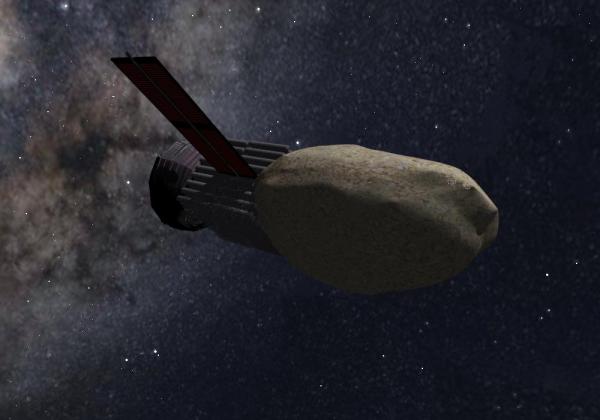BY LETTER
Generation Ship
Culture and Society > Cultural Factors > Interstellar Colonization
Technology > Application > Transportation > Interstellar Transport
Technology > Application > Transportation > Ships
Technology > Application > Transportation > Interstellar Transport
Technology > Application > Transportation > Ships
Huge, slow, self-contained interstellar ships taking more than one lifetime to arrive | |
 Image from Steve Bowers | |
| The Valhalla, a Cronosian generation ship | |
Enormous constructs supporting a breeding population* of humans and associated food producing systems; they are extremely massive, and take fantastically large amounts of energy to accelerate up to interstellar speeds. Slower ships use less energy for propulsion, but they then have to support populations of people or much longer — perhaps thousands of years on a typical slow interstellar flight.
Generation Ships have often been constructed from asteroids of various kinds; rocky asteroids provide material for soil-based agriculture, and also protect against cosmic radiation. Metallic asteroids on the other hand are, or can be made, structurally strong and can withstand greater acceleration.
Most generation ships rotate to provide centrifugal gravity. Only ships designed for use by microgravity-adapted clades (such as the Space people) do not rotate.
Long flights require much more energy to achieve a closed ecological life support system; the absolute minimum energy requirement for a human is eight megajoules per day. None were launched before the Great Expulsion, some few were launched after that event, including Valhalla Habitat. In most cases the Generation ships arrived much later than the lighter, faster hibernation ships and others.
- Note that most generation ships in practice carried a much smaller population of bionts than necessary to maintain a fully viable gene pool; extra genetic material was carried in storage, either as frozen gametes or zygotes, or as digitised DNA. Most of the other species that would be required at the destination were also carried in this form, while on-board food production used a limited number of high-yield food-crops.
Related Articles
Appears in Topics
Development Notes
Text by Steve Bowers
Initially published on 02 February 2010.
Initially published on 02 February 2010.






